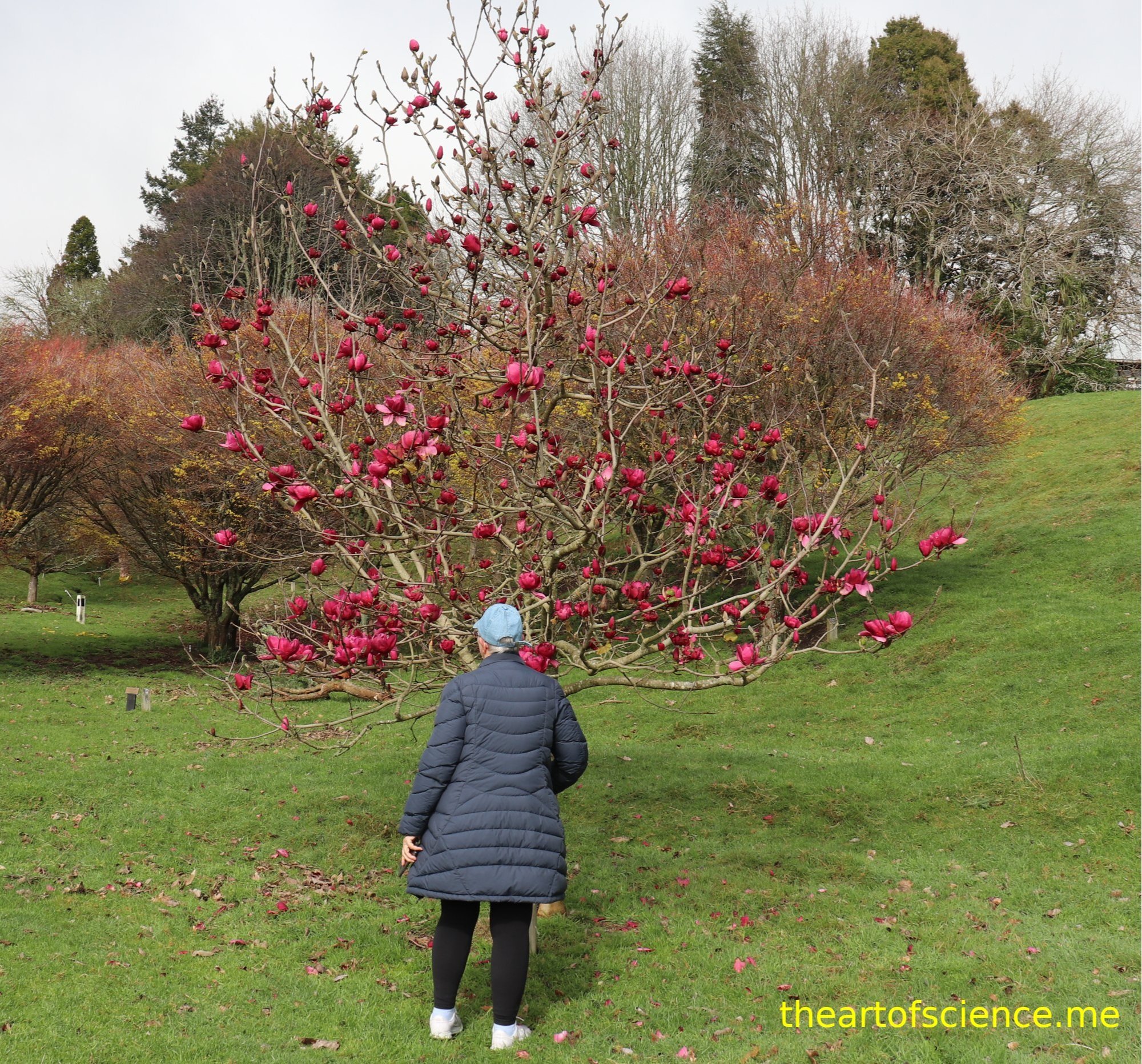Magnficent magnolia tree blossoms

Magnificent magnolia blooms on show in Centennial Park Rotorua.
Centennial Park is locally known as The Rotorua Tree Trust.

Worth a closer look

Magnolias have tough carpels for a good reason.
Magnolia flowers evolved 95 years ago during the Cretaceous period.
Bees existed then; however, Magnolias evolved with beetles as their preferred pollinator. A tough carpel protects developing buds from clumsy beetles with heavy-duty mandibles. Pollen or plant, beetles are not very fussy.

Good to go.

No leaves, just flowers.
Many magnolias bloom first and grow leaves when the blooms drop.

Petals, sepals, and tepals are modified leaves; confused?
Petals are modified leaves often coloured to attract insects.
Sepals are usually green and protect the bud with its developing flower.
They often act as a support for the petals.
Petals and sepals on magnolia blooms are almost identical and are collectively known as tepals. If confused, just stick with the pretty pictures.

A perfectly formed bloom happy to sit in the sunshine.
Patiently waiting for the pollinators to arrive.

Job completed, the fancy gear is no longer required.
Stamen form a beautiful spiral display before the plant discards them as surplus to requirement. A few tired petals remain, ready to drop.

Large scars mark where petals were attached.

The same picture savagely cropped is worth a close look.
Stamens spiral around the central conelike receptacle. A closer look and the elongated anthers have split open, spilling pollen grains all over the show.
Mature pistils with clearly visible stigmas continue the spiral to the top of the receptacle,
Eventually’ red coloured. seeds will appear.

Even on a dull Winter's day, it's impossible to take a bad picture.
In the distance, Magnolia blooms still explode like a firework display in your head, despite the gloomy conditions.

Magnolia Haiku
magnolias bloom
pollinators come to feed
spread the love, new blooms.
Never was any good at poems.

No Words.

